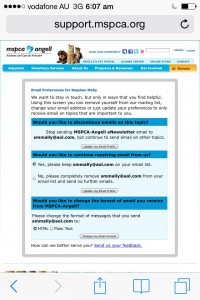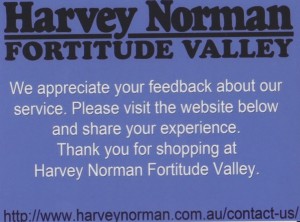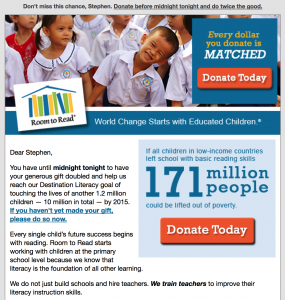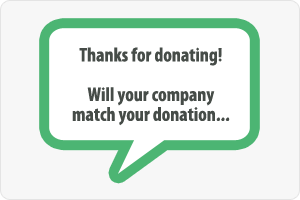It’s Christmastime – at least for QIMR Berghofer Medical Research Institute (QIMR)
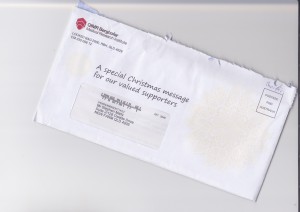 The stores are already filled with Christmas items. I walked by a large office building in Melbourne last week and it was decked out for the holiday season complete with very large Christmas trees, lights, and the works. Each year I wonder which charity will be first to send their Christmas appeal. It is highly probable the charity to win this “contest”, to be first in my letterbox, will be The Salvation Army (the winner the last several years). But, hold on. Not this year. This year’s winner is QIMR Berghofer Medical Research Institute (QIMR).
The stores are already filled with Christmas items. I walked by a large office building in Melbourne last week and it was decked out for the holiday season complete with very large Christmas trees, lights, and the works. Each year I wonder which charity will be first to send their Christmas appeal. It is highly probable the charity to win this “contest”, to be first in my letterbox, will be The Salvation Army (the winner the last several years). But, hold on. Not this year. This year’s winner is QIMR Berghofer Medical Research Institute (QIMR).
The pack, which was received on 30 October 2014, contains a message on the carrier to ensure everyone knows this is their Christmas appeal. The packet also contains: A two-page letter, a note from a woman named Stacey Edwards about her mother’s journey with breast cancer, a fact sheet about breast cancer, and a terrific response device. The response asks me to update my contact details and offers me a host of ways to give a gift including BPay, phone, URL, and FAX. Note the photo of Stacey and her children with Santa on the response device.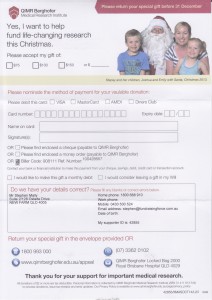
Congratulations to QIMR. The winner of this year’s first of the lot!


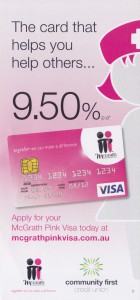 ndation last week and saw an application for an affinity credit card – a McGrath Foundation branded card – in the lobby of the Foundation. I was very surprised to see this application.
ndation last week and saw an application for an affinity credit card – a McGrath Foundation branded card – in the lobby of the Foundation. I was very surprised to see this application.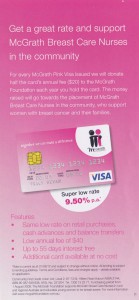 The McGrath Foundation credit card offers those who sign up an opportunity for a low interest rate, coupled with the fact the card issuer donates half the annual fee each year one holds the card to McGrath Foundation. The even more attractive value proposition is the pride you will have by carrying something branded McGrath Foundation in your wallet and each time you use the card you are promoting your affinity to the McGrath Foundation!
The McGrath Foundation credit card offers those who sign up an opportunity for a low interest rate, coupled with the fact the card issuer donates half the annual fee each year one holds the card to McGrath Foundation. The even more attractive value proposition is the pride you will have by carrying something branded McGrath Foundation in your wallet and each time you use the card you are promoting your affinity to the McGrath Foundation!

